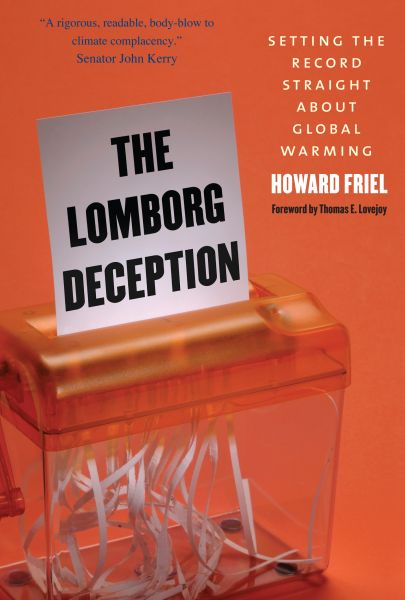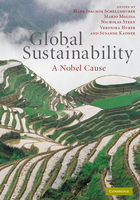Novelist Ian McEwan is fully aware of the dangers of climate change and concerned that renewable energy options be deployed with all possible urgency. His memorable article in the Guardian in November 2008 makes that very clear. In 2005 he went with a group of artists and scientists to the Arctic to spend time on board a ship frozen into a fjord, a group, he says, “dedicated to understanding the effects of global warming on the remote poles, and asking ourselves what we as artists might do.” He writes about the experience in a prologue to the book Global Sustainability –- A Nobel Cause which arose out of the Potsdam Nobel symposium he was invited to in 2007.
We’ve known for some time that climate change would feature in his new novel, Solar, and wondered how. Comedy is the way he has chosen to come at so serious a subject. Climate change hovers in the background of the comic narrative around the central character.
Michael Beard is a middle aged Nobel laureate who received his prize for the work he did as a theoretical physicist in one brilliant summer in his youth. Since receiving his leaureate he has for two decades done no work of consequence, but taken a variety of assorted tasks appropriate to his celebrity status. Official roles with a stipend attached are his preference.
Beard is short, overweight and balding. But the clever scientist holds attraction for a good number of women, and they certainly attract him. His fifth marriage is coming to an end when the book opens in 2000. He has numerous affairs whether married or not, and forthcoming sexual arrangements are never far from his mind. He is overweight because he can’t resist food. He drinks large quantities of alcohol. He is self-centred and self-indulgent. McEwan himself sums it up in a television interview: “I made him rather fat and gross and rather cunning and thieving and lying and above all greedy.”
Not a very promising focus for reflection on climate change. However McEwan deftly weaves strands of climate change concern into the narrative of Beard’s far from admirable but often highly amusing life. This isn’t the place for a review of the novel as a literary work – there are plenty of those available elsewhere – but I’ll try to indicate some of what struck me as climate change commentary in the course of my very enjoyable read of the novel.
Early in the book Beard is largely unperturbed by climate change. He’s not wholly sceptical. He knows the basic physics. But he sees it as one of those background issues which governments can be expected to address and take action on. He’s suspicious and dismissive of talk about peril or calamity. In fact his mind is on other things and he doesn’t really take time to think about climate change. At this point he struck me as fairly representative of a not inconsiderable sector of intelligent people who simply don’t focus on the question long enough to be disturbed by it. The indulgences which preoccupy Beard may be somewhat gross by normal standards, but they fit quite well into familiar societal patterns which preclude serious attention to serious matters.
Later in the novel Beard has had a change. Things are happening, thanks not to himself, but to the persistence of a young scientist at the renewable energy Centre that Beard nominally heads. The young man had seen in Beard’s early Nobel work implications for a form of renewable energy which will use the power of the sun to perform artificial photosynthesis, to make cheap hydrogen and oxygen out of water, with the gases recombined at night in a fuel cell to drive a turbine. (McEwan is here drawing on the work of Daniel Nocera at MIT). After the bizarre accidental death of the young scientist Beard inherits a folder inscribed with his name in which the young man has placed all the relevant calculations of the process. The attention Beard refused him during his life he eventually obtained after death when the older man finally read his work. As a result Beard emerges in 2005 as heavily engaged in plans to attract investment support for this new renewable energy. In a notable passage in the novel he delivers a remarkable speech to a gathering of sceptical fund managers and investment specialists in London. The need for renewable energy is set out with compelling clarity. Never mind that the speech comes from an such unsatisfactory protagonist – McEwan gives his character’s scientific intelligence full range. And provides him with an audience on which it is largely wasted, for the vigorous culture of irrationalist denial has been nurtured in the solid institutions of the City. In one luminous sequence McEwan captures both the promise of escape from the now disastrous energy path on which civilisation has depended and the thick-headed rejection of that promise in favour of business as usual. McEwan may have been cautious of didacticism, but he found in this passage a way of conveying the urgency and frustration that attends an understanding of climate change.
On to 2009 and at last Beard and his business partner are ready to launch the first project in New Mexico in which the new technology will go into production at a modest but useful level. The necessary millions of dollars have been found, the components put to the test and everything assembled on site. On the verge of the grand opening his partner, no scientist but an excellent organiser and raiser of funds, is unnerved by all the talk he is hearing from business people and white coats on TV that the scientists have got it all wrong but don’t dare admit it. The rise in temperature so far is negligible and now the planet is cooling. McEwan manages to pack in most of the denialist hype which gathered strength prior to Copenhagen and make it sound like a genuine conversation. The same goes for Beard’s scientific elucidation for his friend’s benefit. The climax of the conversation is brilliant: “Toby, listen. It’s a catastrophe. Relax!” The passage is a portrayal of the extraordinary persistence of denial and the ease with which it has been able to percolate through some presumably educated sections of society.
The novel ends in a shambles befitting the life of its central character. There’s no grand message for the world. McEwan commented in the TV interview linked to above that novelists who try to sell too strongly a moral message usually find their novels are dead on their feet. He clearly escaped that fate. But along the way he fed in a good deal of the serious concern to which he has given voice outside his fiction. The paradox that it should come through a character who personifies a good deal that is wrong with societal habits is part of the comedy.
We may expect to see writers and artists increasingly treating climate change in their work. It looms so large over society that it can’t be neglected by those who help shape our culture. Hopefully they will help prepare us for the acceptance which surely can’t be delayed for very much longer, and also help us to maintain a decent sense of humanity as we face up to the problematic future we have prepared for ourselves.



You must be logged in to post a comment.